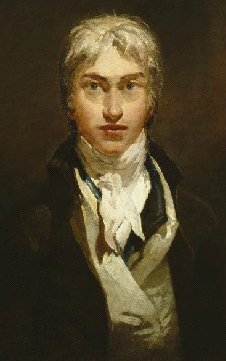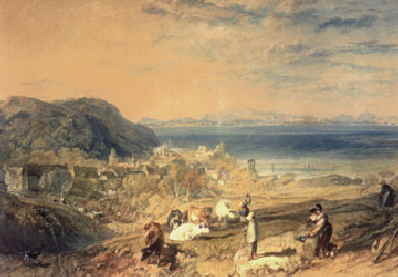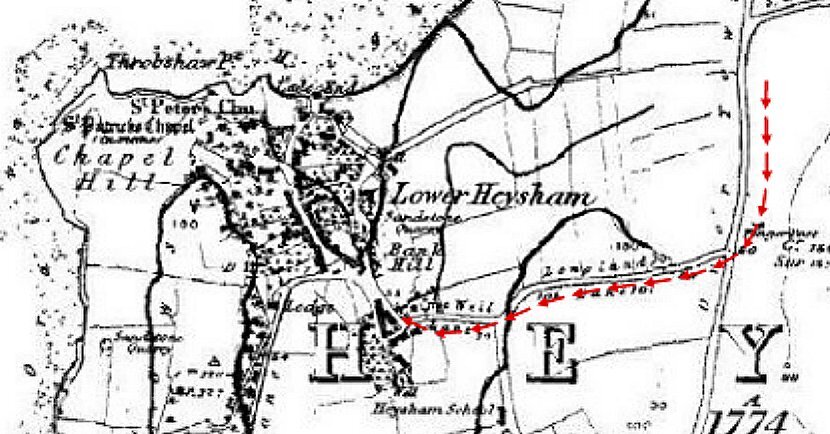
Turner would have made his approach to Heysham along Overtown Lane (now Heysham Road), turned down Longland Lane and on down into the village via Crimewell Lane. (Red arrows in the 1848 map below.) Knowlys Road and Woborrow Road didn’t feature until very late in the 19th century.
In Heysham and Cumberland Mountains the cart, bottom left being driven towards the gate, is clearly in Crimewell Lane; the lie of the land is more or less how it is today with the lane going down a ‘valley’ between high land on each side. So to make his sketch (part of which is shown below) Turner would have been on the higher ground to the south of Longlands Lane, roughly in the position of the large ‘E’ on her map above.
Turner exercises a good deal of artistic llcence in how he portrays a landscape, so to attempt to analyse the detail too carefully is a mistake. Later in the 19th cenury John Ruskin was a great champion of Turner’s work. This is his description (abridged) of Heysham and Cumberland Mountains from his book ModernPainters.
The subject is a simple north-country village, on the shore of Morecambe Bay; not in the common sense a picturesque village; there are no pretty bow-windows, or red roofs, or rocky steps of entrance to the rustic doors, or quaint gables; nothing but a single street of thatched and chiefly clay-built cottages, ranged in a somewhat monotonous line, the roofs so green with moss that at first we hardly discern the houses from the fields and trees The village street is closed at one end by a wooden gate, indication the little traffic there is on the road through it, and giving it something the look of a large farmstead, in which a right of way lies through the yard. The road which leads to this gate is full of ruts, and winds down a bad bit of hill between two broken banks of moor ground, succeeding immediately to the few enclosures which surround the village; they can hardly be called gardens, but a decayed fragment of fencing fill the gaps in the bank..... At the end of the village is a better house, with three chimneys and a dormer window in its roof, and the roof is of shingle instead of thatch, very rough. This house is no doubt the clergyman's; there is some smoke from one of its chimneys, none from any other in the village.... All noble composition of this kind can be reached only by instinct...

© British Museum
For more information about Turner, visit Wikipedia.


